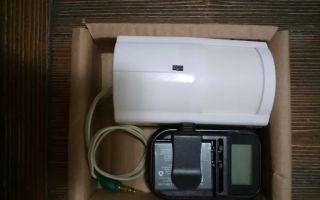Acer BIOS Boot from USB Configuration: A Complete Guide for Beginners and Experts
- 1. Introduction to Acer BIOS and Booting from USB
- 2. Setting Up BIOS for USB Boot
- 3. Common Issues and How to Troubleshoot
- 4. Real-Life Case: Successful USB Boot Configuration
- 5. Recommended Tools for Acer BIOS Configuration
1. Introduction to Acer BIOS and Booting from USB
If you're looking to boot your Acer laptop or desktop from a USB device, understanding the BIOS configuration process is crucial. BIOS (Basic Input/Output System) is the firmware that controls how your computer boots up. This process allows you to run operating systems or software from external drives like USB sticks, which can be useful for troubleshooting or installing a fresh OS.
In this article, we will walk you through the step-by-step process of configuring your Acer BIOS to boot from USB, covering everything from accessing BIOS to handling common issues.
2. Setting Up BIOS for USB Boot
Follow these steps to configure your Acer computer's BIOS for booting from a USB device:
- Restart your Acer computer and press the F2 key to enter BIOS settings during startup.
- Navigate to the Boot tab using the arrow keys.
- Find the option labeled Boot Device Priority or something similar and select it.
- Set your USB drive as the primary boot device by moving it to the top of the list.
- Save the changes and exit BIOS by pressing F10.
After these steps, your Acer computer should boot from the USB device if it is properly connected. It's essential to ensure that the USB drive is bootable, meaning it contains a bootable OS or software installation file.
3. Common Issues and How to Troubleshoot
Even with proper configuration, some users might face issues when trying to boot from USB on Acer devices. Here are some common problems and their solutions:
- USB Not Recognized: Ensure that the USB is inserted correctly and that it is bootable. You can use tools like Rufus to create a bootable USB drive.
- Incorrect BIOS Settings: Double-check that the boot order is set correctly. Sometimes, UEFI and legacy boot modes can conflict.
- Fast Boot Enabled: Disable fast boot in BIOS if the USB drive is not being recognized. Fast boot can skip certain initial checks.
If the issue persists, it may be worth trying a different USB port or testing the USB drive on another device.
4. Real-Life Case: Successful USB Boot Configuration
A common scenario is when a user needs to install a new operating system or troubleshoot a failing one. For instance, a user named John had issues booting his Acer laptop from a USB drive. After accessing BIOS and adjusting the boot order, John was able to run a fresh installation of Windows 10 from his USB. By following the step-by-step process outlined above, he successfully solved his problem and got his laptop back up and running.
This case highlights how configuring the BIOS for USB boot can resolve issues like corrupted OS installations or system failures.
5. Recommended Tools for Acer BIOS Configuration
For users looking to optimize their booting experience, there are a few tools worth considering:
- Rufus: A free tool for creating bootable USB drives with various operating systems.
- USB Drive Formatter: Ensure your USB drive is formatted correctly to be bootable before starting the process.
If you're looking to purchase reliable USB drives or accessories to help with your BIOS configuration, check out [Ninja Stik](https://www.ninjastik.com), where you can find the latest products tailored for your needs.






























